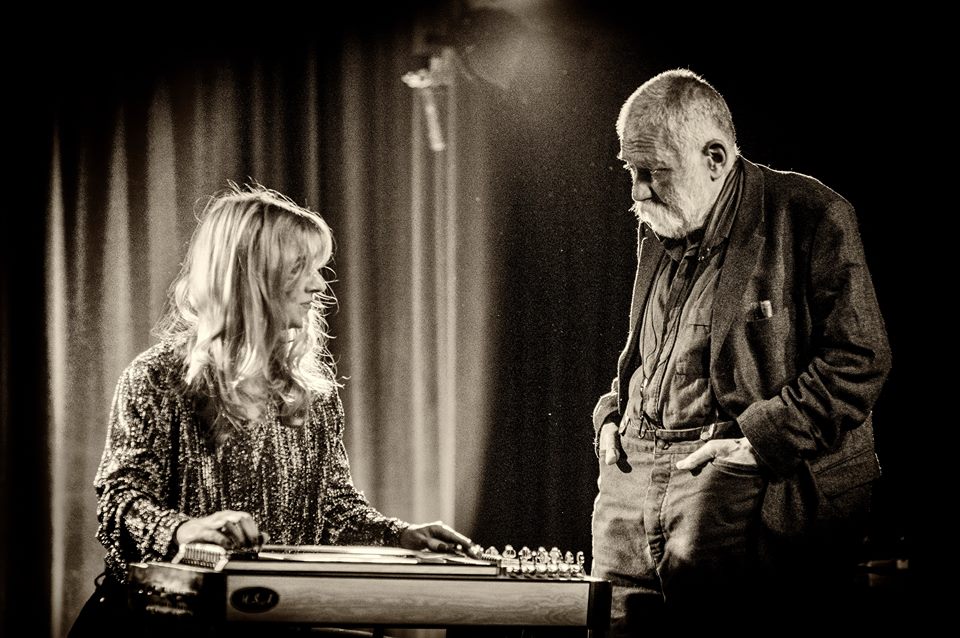


These two releases are fine examples of the flourishing creative music scene in Toronto. The occasional reference to traditional jazz and blues is a welcome musical commentary. Haas’ rapid saxophone lines against Aldcroft’s guitar colours are brilliant in their textures, phrasing and energy. The music is more atonal than the above release making it perhaps a bit more of a difficult listening exercise for those not accustomed to this type of music. Notes on the miasms features Aldcroft improvising with Andy Haas on sax and electronics. It sounds like one giant guitar – riffs, extended solos and in-your-face sound bolts, combined with humour and wit in a stunning example of superb music. In contrast, The Long (II) is a wall of sound, giant stadium extended rock guitar extravaganza. The minimalistic patterns and atonal guitar effects are precisely placed in the relaxing soundscape. The Long (I) is a mellow soundscape which seems to emulate the soothing environment of the wilderness. Each “short” is a concise tidbit of colour and rhythm which sets up a lengthier (over 20 minutes) set. The long and the short of it features him with fellow guitarist Joel LeBlanc in two contrasting short and long works. He's also recorded or performed with many other musicians, including Cecil Taylor, Evan Parker, Han Bennink, Bill Laswell, William Parker, Willem Breuker, Ken Vandermark, Conny Bauer and Brötzmann's son, Caspar Brötzmann, a notable guitarist in his own right.Toronto guitarist Ken Aldcroft displays his formidable guitar technique and improvising acumen in two new “free improv” releases.
#Peter brötzmann 03a full
He has released over thirty albums as a bandleader, and has appeared on dozens more, with groups such as his Die Like A Dog Quartet (with Toshinori Kondo, William Parker and Hamid Drake, being loosely inspired by saxophonist Albert Ayler, a prime influence on Brötzmann's music), Sonore (a reed trio with Ken Vandermark and Mats Gustafsson) and Full Blast (with bass guitarist Marino Pliakas and drummer Michael Wertmuller). In the 1980s, Brötzmann flirted with jazz fusion and noise rock in the avant-garde supergroup Last Exit.īrötzmann has remained active, touring and recording regularly. The logistical difficulties of touring with an octet resulted in Brötzmann eventually slimming the group to a trio once again, the most notable and lasting one with Han Bennink and Fred Van Hove. One critic has written Machine Gun offers "a heavy-impact sonic assault so aggressive it still knocks listeners back on their heels decades later."
#Peter brötzmann 03a free
Among his first musical partnerships was that with double bassist Peter Kowald.įor Adolphe Sax, Brötzmann's first recording, was released in 1967 and featured Kowald alongside drummer Sven-Åke Johansson.ġ968 saw the release of Machine Gun, an octet recording often listed among the most notable free jazz albums. He first taught himself to play various clarinets, then saxophones he is perhaps the only jazz musician to play the tárogató. He has not abandoned his art training, however: Brötzmann has designed most of his own album covers. He studied painting in Wuppertal and was involved with the Fluxus movement, but grew dissatisfied with art galleries and exhibitions. His rough, lyrical timbre is easily recognized on his many recordings. Peter Brötzmann (born Main Remscheid, Germany) is a German free jazz saxophonist.īrötzmann is among the most important European free jazz musicians.


 0 kommentar(er)
0 kommentar(er)
